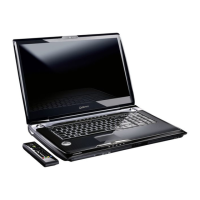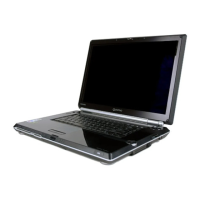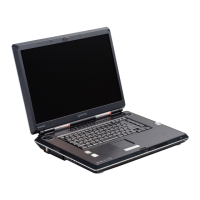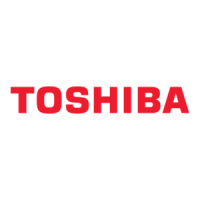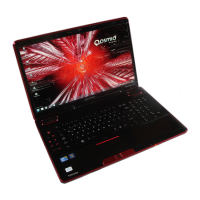User’s Manual Glossary-9
Glossary
IrDA 1.1: An industry standard that enables cableless infrared serial data
transfer at speeds of up to 4 Mbps.
K
K: Taken from the Greek word kilo, meaning 1000; often used as
equivalent to 1024, or 2 raised to the 10th power. See also byte and
kilobyte.
keyboard: An input device containing switches that are activated by
manually pressing marked keys. Each keystroke activates a switch
that transmits a specific code to the computer. For each key, the
transmitted code is, in turn, representative of the (ASCII) character
marked on the key.
kilobyte (KB): A unit of data storage equal to 1024 bytes. See also byte
and megabyte.
L
L1 cache: Level one cache. Memory cache built into the processor to help
improve processing speed. See also cache memory, L2 cache.
L2 cache: Memory cache installed on the motherboard to help improve
processing speed. It is slower than L1 cache and faster than main
memory. See also cache memory, L1 cache.
LAN: A group of computers or other devices dispersed over a relatively
limited area and connected by a communications link that enables
any device to interact with any other on the network.
Light Emitting Diode (LED): A semiconductor device that emits light
when a current is applied.
Liquid Crystal Display (LCD): Liquid crystal sealed between two sheets
of glass coated with transparent conducting material. The viewing-
side coating is etched into character forming segments with leads
that extend to the edge of the glass. Applying a voltage between the
glass sheets alters the brightness of the liquid crystal.
M
main board: See motherboard.
megabyte (MB): A unit of data storage equal to 1024 kilobytes. See also
kilobyte.
megahertz: A unit of wave frequency that equals 1 million cycles per
second. See also hertz.
memory: Typically refers to the computer's main memory, where
programs are run and data is temporarily stored and processed.
Memory can be volatile and hold data temporarily, such as RAM, or
it can be nonvolatile and hold data permanently, such as ROM. A
computer's main memory is RAM. See RAM, ROM.
